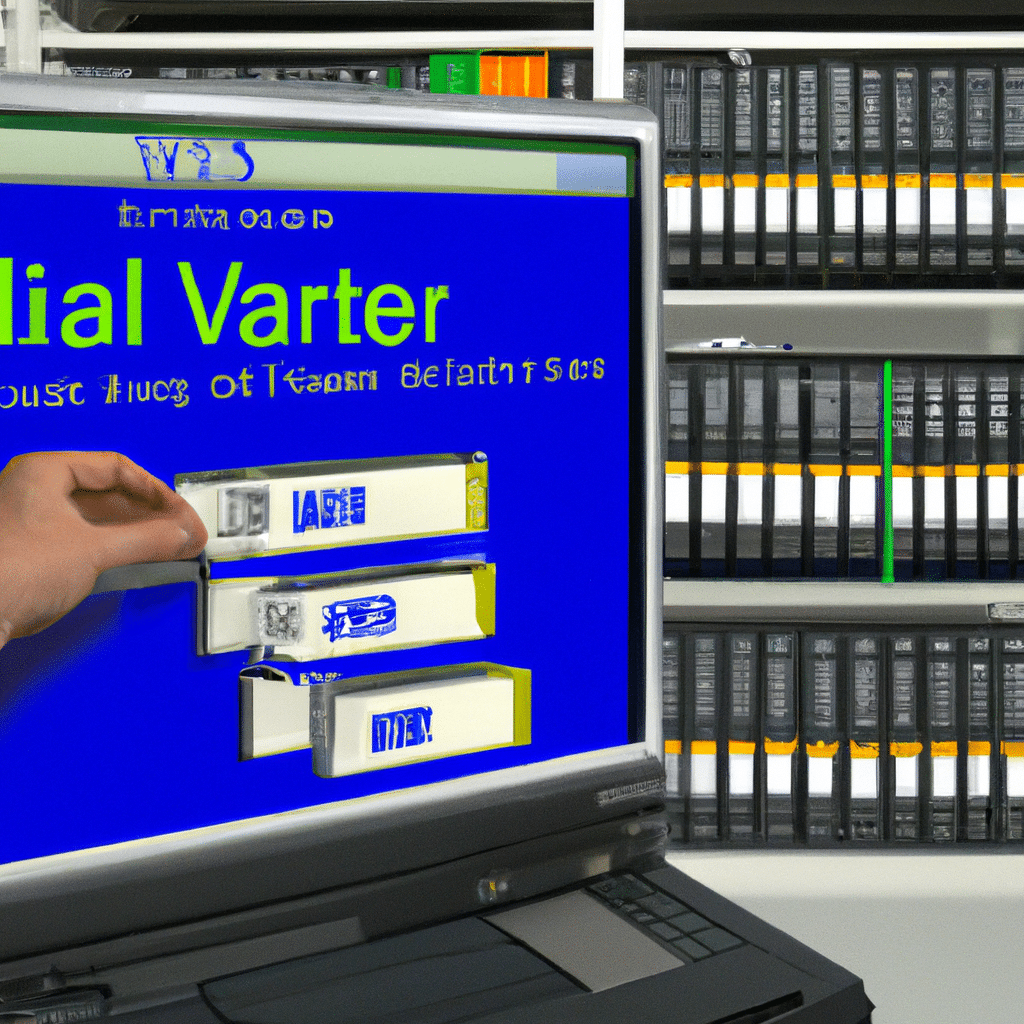As businesses continue to rely more heavily on digital data storage, the importance of reliable data backup solutions has never been higher. Virtual Tape Libraries (VTL) have emerged as an efficient and cost-effective solution to backup data in a safe and secure manner. In this article, we will discuss the benefits of using VTLs, how they work, and how to implement them in your data backup strategy.

What is a Virtual Tape Library (VTL)?
A Virtual Tape Library (VTL) is a software-defined storage solution that emulates traditional tape libraries. Instead of using physical tapes, VTLs use disk-based storage to provide faster backups and restores, while reducing the need for tape drives and tape media. VTLs are typically implemented as a software layer on top of existing disk arrays or as a dedicated hardware appliance.
One of the primary benefits of VTLs is their ability to emulate traditional tape libraries. This means that existing backup software can be used without any modifications, making the transition to a VTL-based backup solution seamless. Additionally, VTLs offer the flexibility of disk-based backups while retaining the benefits of tape-based backups, such as offsite storage and long-term archiving capabilities.
How Does a Virtual Tape Library (VTL) Work?
VTLs work by presenting themselves to backup software as if they were physical tape libraries. Backup software writes data to the VTL, which then stores the data on disk-based storage. The VTL then emulates the process of writing the data to tape, creating a virtual tape that can be stored offsite for disaster recovery purposes.
When it comes time to restore data, the VTL emulates the process of reading the data from tape. The backup software requests the data from the VTL, which then retrieves the data from disk-based storage and presents it to the backup software as if it were reading from a physical tape.
Benefits of Using a Virtual Tape Library (VTL)
There are several benefits to using a VTL for data backup and recovery:
Faster Backups and Restores
VTLs offer faster backups and restores than traditional tape-based solutions. Because data is stored on disk-based storage, backups and restores can be performed at much faster speeds than with tape-based solutions.
Cost-Effective
VTLs can be a cost-effective solution for data backup and recovery. While the initial cost of implementing a VTL may be higher than traditional tape-based solutions, the long-term cost savings can be significant. VTLs eliminate the need for tape drives and tape media, which can be costly to maintain and replace.
Flexibility
VTLs offer the flexibility of disk-based backups while retaining the benefits of tape-based backups. Data can be stored on disk-based storage for faster backups and restores, while virtual tapes can be created for long-term archiving and disaster recovery purposes.
Scalability
VTLs are highly scalable and can be easily expanded as storage needs grow. Additional disk-based storage can be added to the VTL, and additional VTLs can be added to the backup environment as needed.
Implementing a Virtual Tape Library (VTL)
Implementing a VTL in your data backup strategy can be a straightforward process. Here are the general steps to follow:
1. Evaluate Your Backup Environment
The first step in implementing a VTL is to evaluate your existing backup environment. Determine which backup software you are using and which hardware is currently being used for backups.
2. Choose a VTL Solution
Next, choose a VTL solution that is compatible with your existing backup software and hardware. There are many VTL solutions available, both software-only and hardware appliances.
3. Install and Configure the VTL
Once you have chosen a VTL solution, install and configure the VTL according to the manufacturer’s instructions. This will typically involve installing the VTL software or hardware and configuring it to work with your existing backup software.
4. Begin Backing Up Data
Once the VTL is installed and configured, begin backing up data to the VTL. This can typically be done without any modifications to your existing backup software.
5. Test Restores
Finally, test restores to ensure that the VTL is working correctly. This will involve restoring data from the VTL to ensure that it can be done in a timely and reliable manner.
Conclusion
Virtual Tape Libraries (VTLs) offer a cost-effective and flexible solution for data backup and recovery. By emulating traditional tape libraries, VTLs offer the benefits of disk-based backups while retaining the benefits of tape-based backups. Implementing a VTL in your backup strategy can be a straightforward process, and can provide significant cost savings and improved backup and restore performance.












